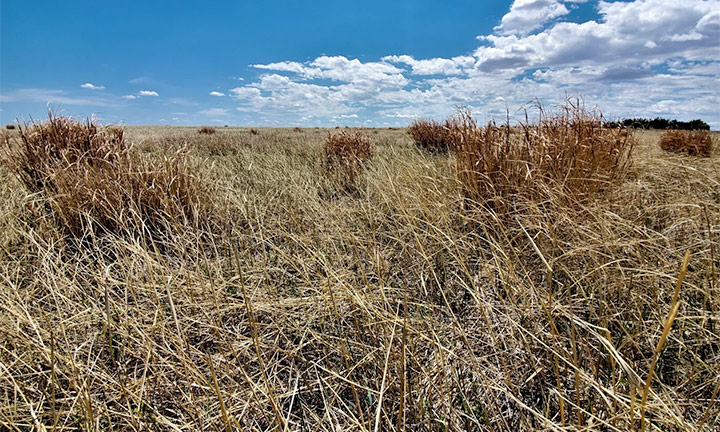The lesser prairie-chicken serves as an indicator for healthy grasslands and prairies — needing large, unfragmented parcels of intact native grasslands to maintain self-sustaining populations. This makes them an important measure of the overall health of America’s grasslands, a treasured and storied landscape…
— from a press release, ‘U.S. Fish and Wildlife Service Lists the Lesser Prairie-Chicken Under the Endangered Species Act’, November 2022.
It was love at first sight, I suppose.
Or maybe I grew to love her, because she was endangered.
First off, we need to clarify that she’s not a chicken. She’s actually a member of the grouse family. And she’s not actually ‘endangered’ in Colorado; she’s only ‘threatened’.
I can’t say I see much difference between ‘threatened’ and ‘endangered’. They seem like two words that mean the same thing, if you ask me. But if you ask the bureaucrats working for the U.S. Fish and Wildlife Service, they will explain that she’s officially ‘threatened’ in Colorado, and officially ‘endangered’ in New Mexico and Texas.
I’m not making this up.
But let me explain about how it all started. I was immediately captivated by her bright yellow eye shadow. I don’t know many human females that can pull off bright yellow eye shadow, but the lesser prairie-chicken wears it perfectly.
Tympani. That was my nickname for her. Short for Tympanuchus pallidicinctus.
Tympanuchus pallidicinctus. Who would come up with a name like that, for someone as cute as Tympani?
Sometimes I called her ‘Tympani Sunshine’.
I also need to clarify that we never actually met. She was very shy, but that’s not the reason. I’m also very shy, and that’s also not the reason. The reason we’ve never met is, she lived in the southeastern corner of Colorado, making ends meet on whatever dry grassland a lesser prairie-chicken would find suitable to her lifestyle. And of course, she probably had boyfriends, and she might even have had children.
I actually didn’t know much about her daily life. Not the intimate details, anyway.
I lived in in the thriving metropolis of Pagosa Springs, 400 miles away. Tympani would never fit in, here. And I didn’t expect her to.
Where she lived, in Baca County, there is literally nothing there, except dry grass. A few dirt roads, but no actual highways. But mostly, just dry grass. Miles and miles and miles of dry grass, as far as the eye can see. And here and there, lesser prairie-chickens like Tympani. ‘Threatened’ lesser prairie-chickens.

Why anyone would threaten a lesser prairie-chicken is beyond me. I think they are beautiful.
The problem is, I became obsessed. I found myself staying up late, way past midnight, watching USDA and NRCS videos and Audubon Society documentaries about lesser prairie-chickens.
Okay, yes, some of them were about mating rituals, but not all of them.
One night — middle of the night — my wife Darlene walked in on me, watching a mating ritual video.
“Do you have any idea what time it is?” I could tell right away, she was pissed, and she didn’t actually expect me to know what time it was.
But I made an attempt. “Ten o’clock?”
“It’s past two a.m. Are you watching those lesser prairie-chicken videos again?”
“They’re just birds, Darlene. Just beautiful birds. Nothing to get excited over.”
“I think you love those goddamn lesser prairie-chickens more than you love me!” She fairly spat the words at me.
I looked her right in the eye. “Well, you might just be right about that.”
Wrong answer. Men, if you wife ever says to you, “I think you love [fill in the blank] more than you love me,” the proper answer is, “That’s silly, honey. You are my everything. Nothing and no one could ever replace you.”
But I didn’t know this at the time. So I said, “Well, you might just be right about that.”
Since the divorce, I’ve sort of lost my interest in lesser prairie-chickens.
It was just an infatuation.
